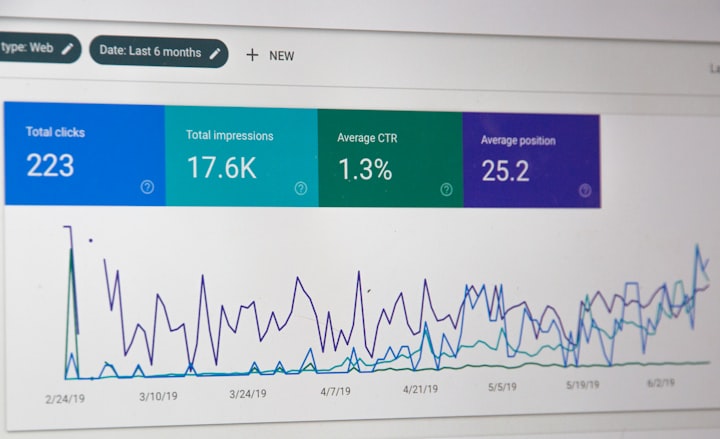How to rank your website using SEO tricks
If you have a website, you'd like to get more traffic on it. This is where SEO comes in.

If you have a website, you'd like to get more traffic on it. This is where SEO comes in. The best way to rank your website is by learning SEO tactics and applying them correctly. Here are some of the most effective ways to learn about SEO so that you can rank higher in search engines:
Publish high-quality content.
As the saying goes, "Content is King." This means that content is the most important factor in SEO. If you want to rank your site high on search engines, then you need to create content that people want to read. Your website should be updated regularly with original, relevant and valuable content that's easy to read and understand.
You can use tools like Yoast SEO or Moz Local for your blog posts' metadata. These tools help improve how Google indexes your pages, so they can be easily found in search results when someone searches for keywords related to your business or niche topic area.
On-page SEO.
The first step to SEO is on-page SEO. This means that you need to optimize the content of your site so that it will show up in search results for relevant keywords, and help your visitors find their way around.
- Use keywords in the title tag and meta description: Make sure that all web pages have a title tag and meta description that include your target keyword or phrases. The title tag is usually displayed as clickable text on search engines, while the meta description appears below the page title when it's being displayed in Google's search results results page (SERP).
- Use keywords throughout your content: It's important not just to use a lot of keywords but also make them readable by humans! Don't go overboard with keyword stuffing; instead, focus on using natural language and putting emphasis on terms that would naturally be associated with what you're writing about.
- Include target URL terms: You can use some variation of your target keyword(s) within every web address for each piece of content you create. This helps Google understand what type of information is contained within each URL—for instance, if someone searches for "how do I get rid of bed bugs?" then clicking through from SERPs onto one particular piece of content might lead them straight away into section where they'll find information on how exactly one might go about accomplishing said task (and possibly even some tips!).
User experience.
User experience. You might not be aware, but how easy your website is to use can impact the amount of time people stay on it and how often they return. The more usable your site is, the better chance you have of getting repeat visitors and high rankings in search results.
In order to make sure that your site has a good user experience (UX), there are many things you need to consider:
- Make sure it loads quickly. This may seem like an obvious step, but if people have to wait too long before they can see what's on the page or access important functionality, they will leave before giving your site enough time for SEO purposes! Using responsive design helps speed up load times too because mobile devices aren't as powerful as computers or laptops so they're slower at doing things like loading pages with lots of images or videos embedded within them. With responsive design you only load images/videos once across all devices rather than having multiple versions available which takes up unnecessary space on each device thus saving bandwidth costs (and making users happier).
- Create an intuitive layout where everything looks familiar from one section of pages through another one by using consistent language patterns throughout each section within those pages (elements like headers). These patterns should also include consistent keywords used throughout those sections so Google knows exactly what type of content can be found inside each section without having any confusion between different topics being discussed therein!
Keyword usage.
A big part of SEO is getting your website to rank for the keywords you want it to rank for. There are many steps you can take to do this:
- Use keywords in your title, meta description and meta keywords.
- Use keywords in your content.
- Use keywords in your URL.
- Use keywords in image alt text (if applicable).
- Use internal links to other pages on your site that contain related or similar content
Backlinks.
Backlinks are links to your website that are found on other websites and blogs. There are two types of backlinks:
- Do-follow vs No-follow
- Internal vs External backlinks
Search intent optimization.
This is the process of optimizing your content to match the intent of a search query, also known as search terms.
The term “intent” refers to the reason a user is searching for something in particular. For example, someone might be looking for information about a specific product or service and have their own idea about what they want from that product or service (e.g., “best birthday cake recipe”). In other cases, users may simply be browsing for fun (e.g., “pug dogs”).
Technical SEO.
To ensure that Google can crawl your website and find all the relevant content, it's important to follow a few technical SEO rules.
- Create a sitemap and submit it to Google Webmaster Tools.
- Use H1 and H2 tags for different sections of your site (but don't overdo it).
- Use alt tags on images so that they'll be accessible if someone searches for them with screen readers or other accessibility tools, as well as visually accessible to users who have trouble seeing what's on their screen clearly due to vision problems like colorblindness or low vision/blindness (you can use Google's tool called "Colors & Fonts" to assist in creating alt text).
- Give each image on your site an appropriate filename (this will help with indexing), but do not include overly specific information like dates in filenames unless there are multiple versions of the same thing (e.g., holiday cards). For example: Instead of having "Happy Birthday Dad!" as an image name for every birthday card sent out throughout Dad's life, simply name them all "Dad Card."
If you want to rank your website, you have to focus on both quality content and good SEO practices.
Here's the simple truth: if you want to rank your website, you have to focus on both quality content and good SEO practices. But here's another truth: it doesn't work the other way around. Getting a lot of traffic from search engines isn't going to make people like your website more or make them want to link back to it from their own sites—and getting links from other websites (which is called inbound linking) won’t help improve your rankings if what you're linking isn't good enough for people searching for whatever keywords they're using as search terms in Google or Bing.
So here's what I'm saying: don't try and rank your site first; make sure that once it gets ranked, people actually go there!
Conclusion
I hope this article was able to give you some insight into how to rank your website. While there are many other factors that go into ranking a site, these are some of the most important ones that can help drive traffic and convert visitors into customers. The key takeaway from this article should be that you need to focus on both quality content and good SEO practices if you want to rank well in search engines like Google or Bing.
About the Creator
Deladem Kumordzie
Challenging everything I know, unlearning & relearning⚡️ A rare breed of business and technology. Business Planning || Branding || Front End developer || Graphics || Entrepreneur || Interested in Venture Studios






Comments
There are no comments for this story
Be the first to respond and start the conversation.